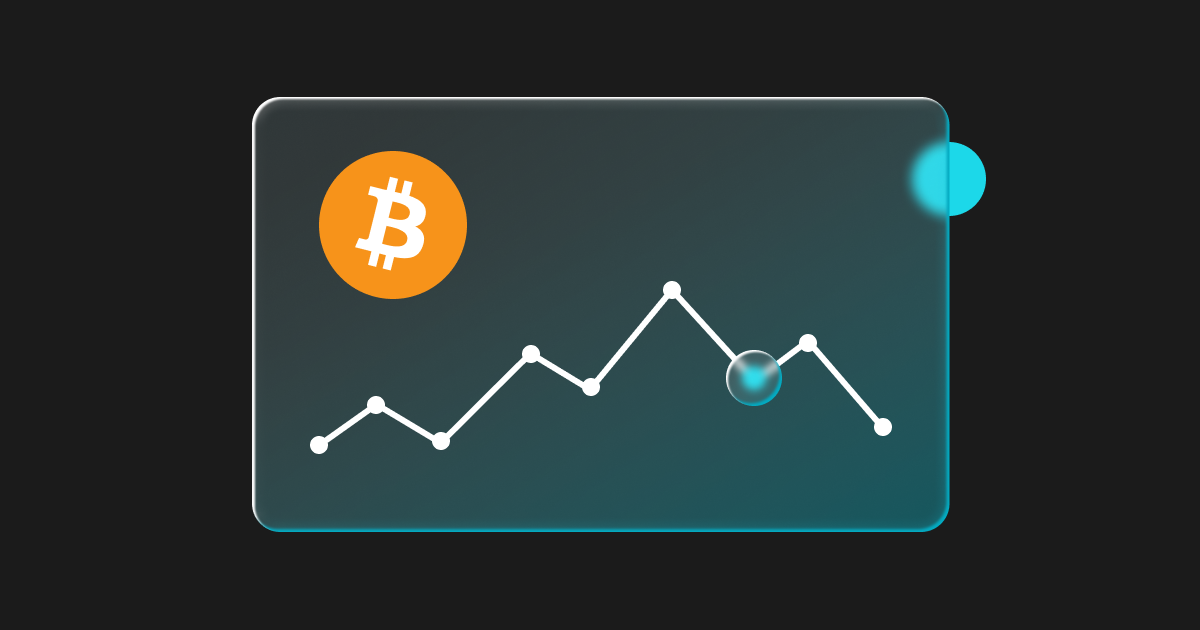Coinbase rolls out Lightning Network support in collaboration with Lightspark
Quick Take Coinbase is rolling out Lightning Network support from today, seven months after the crypto exchange confirmed its decision to integrate the protocol. The integration enables a faster and cheaper way for its users to send, receive or pay with bitcoin following crypto exchange rivals such as Bitfinex, Kraken and Binance.
Coinbase, the largest U.S. crypto exchange by trading volume, is rolling out support for the Lightning Network from today, enabling a faster and cheaper way for its users to send, receive or pay with bitcoin directly from their account.
Previously, bitcoin transfers on Coinbase were processed on-chain, meaning transactions could take between 10 minutes and two hours, incurring high fees during periods of network congestion.
Launched in 2017, the Lightning Network is a Layer 2 protocol built on top of the Bitcoin BTC -2.12% blockchain, designed to address scalability issues via bi-directional payment channels that enable near-instant, low-fee transactions off-chain without immediate settlement on the base layer.
“Growing Bitcoin adoption increases economic freedom in the world. I’m thrilled that our Lightning integration is live to make Bitcoin more useful and accessible worldwide,” Coinbase’s protocol specialist and Lightning integration lead Viktor Bunin told The Block. “Offering faster and cheaper BTC payments through our partnership with Lightspark is another huge milestone for the ecosystem.”
Fees on the Lightning Network are broken down into a flat rate base fee as low as one satoshi — the smallest unit of bitcoin and equivalent to less than $0.01 — and a liquidity provider fee or fee rate as a percentage charged on the value of the payment. Node operators on the network can set their fees at varying levels to compensate for locking up liquidity.
Bunin told The Block there is a 0.1% processing fee associated with Lightning transactions on Coinbase for sends only, which should be processed within a few seconds. At launch, Coinbase users will be limited to withdrawing a maximum of $2,000, meaning the maximum withdrawal fee would be $2, he said. This is higher than average Ethereum Layer 2 transactions but lower than transactions on the Bitcoin blockchain.
“A conservative limit was selected because although Lightning can support arbitrarily large BTC sends, the average success rate of payments declines as the size of the payment increases,” Bunin said. “Setting a lower limit at launch will improve our users’ experience and can be adjusted based on user feedback and as liquidity on the network increases.”
In a statement shared with The Block, Coinbase claimed that its Lightning Network integration meant the cost for its users to send bitcoin globally was now 20 times lower than the average 2% charged on credit card transactions and a fraction of the $30 paid for wire transfers.
While the integration will enable users in supported regions to select between Lightning or the Bitcoin base layer for withdrawals and payments, Coinbase did not specify which regions would be supported on launch. “The Lightning Network Integration is not available in all regions just yet. We’re rolling out support on a case-by-case basis,” Bunin said.
Collaborating with Lightspark
Coinbase partnered with Lightning Network infrastructure firm Lightspark for the integration. Lightspark is led by CEO and co-founder David Marcus , known for his prior leadership roles at PayPal and Meta, including the latter’s Diem stablecoin project.
The selection of Lightspark as Coinbase’s integration partner was announced on April 3, with Marcus calling it another “significant milestone” for Lightning at the time.
“We decided to use a non-custodial integration partner because Lightning’s design has an optimization component as it regards to channel liquidity management and route success rates,” Bunin told The Block. “It made sense to leverage the expertise of a partner that had a maniacal focus on solving these issues while Coinbase could focus on securing our users' assets and improving their user experience while using Lightning.”
“Partnering with Coinbase to introduce Lightning payments to their customers is a pivotal milestone in our shared goal of providing real solutions for Internet payments,” Marcus told The Block, responding to today’s rollout. “Collaborating closely with the Coinbase team has been an exceptional experience, and we're excited that hundreds of millions of people in hundreds of countries can now send fast, cheap Bitcoin transactions.”
No plans to integrate Lightning into Coinbase Wallet
Bunin said there were no current plans to integrate Lightning into Coinbase Wallet (its web3 non-custodial wallet) or any other Coinbase products or services at this stage. However, the team will closely monitor the growth of the Lightning Network and its adoption by Coinbase customers to guide any potential expansion into products like Coinbase Wallet or its crypto payments service Coinbase Commerce, he added.
“While we don’t know how many users will use Lightning to send BTC, we’re excited by the traction we’ve seen for Layer 2s in other ecosystems,” Bunin continued. On Ethereum, around 35% of ETH sends were made via Layer 2 protocols like the Coinbase-incubated Base network, he said, adding, “usage, adoption, and traction of Layer 2s on Bitcoin and Ethereum are obviously very different, but we generally expect Layer 2 usage to increase over time as users seek out cheaper and faster transactions.”
How we got here
Coinbase CEO Brian Armstrong first suggested Coinbase would support the Lightning Network at some point in the future in April 2023. Coinbase then confirmed it would integrate the Bitcoin Layer 2 in September 2023, with Armstrong saying bitcoin is the “most important asset in crypto” and the exchange was “excited to do our part to enable faster/cheaper Bitcoin transactions."
Armstrong's comments followed a consultation process kicked off a month earlier requesting feedback on how to best implement Lightning. That process began after Armstrong responded to an X post from Block CEO Jack Dorsey asking, "Why do you continue to ignore Bitcoin and Lightning? What 'crypto' is a better money transmission protocol and why?"
"We’re looking into how to best add Lightning. It’s non-trivial, but I think it's worth doing. I’m all for payments taking off in Bitcoin," Armstrong said at the time. "Not sure why you think we’re ignoring Bitcoin — we’ve onboarded more people to Bitcoin than probably any company in the world. Let’s build it together."
Coinbase joins Bitfinex, OKX, Kraken and others in offering Lightning support
Coinbase’s Lightning Network integration comes sometime after some of its major crypto exchange rivals. Bitfinex was the first major crypto exchange to offer Lightning Network support in 2019. OKX added Lightning support in 2021, Kraken in 2022 and Binance completed the integration in July 2023.
When asked why Coinbase had taken longer to integrate the Lightning Network than many of its rivals, Bunin said it was about evaluating the Layer 2’s growth and adoption before implementing support.
“Coinbase’s mission is to increase economic freedom in the world and supporting Bitcoin is a key part of that story. We’ve evaluated Lightning support for a few years before we decided to add support last year,” Bunin told The Block. “The key drivers in our decision were the continued growth and adoption of Lightning, maturity of the underlying technology and our goal to get onchain payments down to 1 second and costing 1 cent.”
Beyond integrating Lightning support, Coinbase has also invested in several projects in the Bitcoin ecosystem through its venture arm, including self-custodial storage solution Casa, Layer 2 rollup BOB and decentralized exchange Portal.
Lightning Network adoption
Lightning Network adoption has grown substantially in recent years, with a current total capacity of nearly 5,000 bitcoins ($311 million), according to The Block's data dashboard.
However, the capacity in bitcoin terms has fallen 12.9% from a peak of 5,640 bitcoin in July 2023 amid the run-up in bitcoin’s price. Lightning Network capacity is 9.6% down in U.S. dollar terms from a peak of $344.2 million on March 13, as bitcoin approached its latest all-time high of $73,836.
Disclaimer: The content of this article solely reflects the author's opinion and does not represent the platform in any capacity. This article is not intended to serve as a reference for making investment decisions.
You may also like
Amir Bandeali Stays True to Code as Co-CEO of 0x

Bitcoin Hash Rate Reaches Record High
Bitcoin's hash rate just hit a new all-time high, signaling strong network security and growing miner confidence.What the Record Hash Rate Really MeansA Surge Driven by Miner OptimismPre-Halving Momentum Builds

Bitcoin Nears $85K Amid Trade Optimism and Fed Hints at Rate Cuts

Trade wars push blockchain into supply chain solutions

